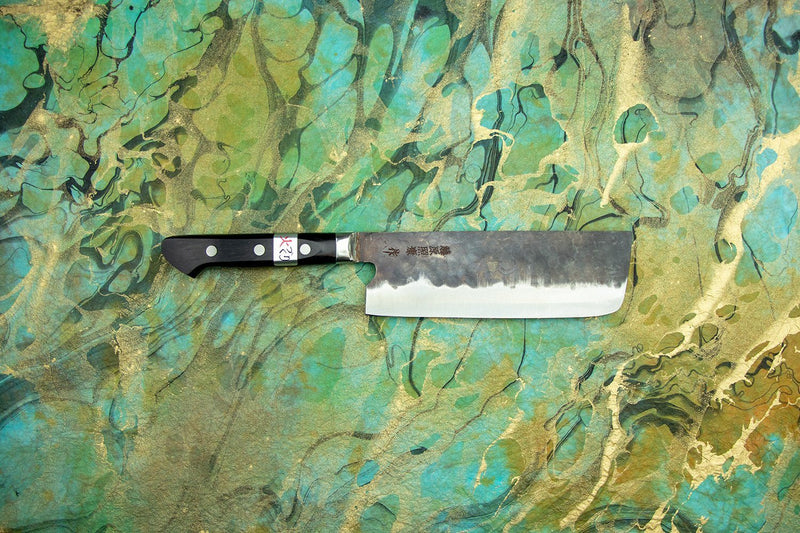
What is a Nakiri, and Why do I Need One?
Kevin let me try one out, and I was shocked by how light it was compared to my expectations. This cleaver-looking knife was almost paper-thin and very easy to wield! Turns out, the nakiri is no meat cleaver. This square flat-edged blade is designed explicitly with vegetables in mind, and boy does it perform. I initially came to the nakiri for its badass looks, but I stayed for its unreal performance
What is a nakiri?
Have you ever chopped peppers for a stir-fry and been left with a string of still-attached vegetables resembling paper dolls? That’s because It’s actually very easy not to cut entirely through the skin of a vegetable with a curved blade. The nakiri makes more complete contact with your cutting board using its flat edge, resulting in cleaner cuts!
Using a nakiri can take a bit of adjustment. When you first get to chopping, you’ll probably notice that sliding the knife forward or back works much better than rocking it. All blades work better by sliding, but we’ve been trained by TV to rock our knives in the west. The nakiri re-trains your brain, and with a bit of practice, your knife skills will be better than ever!
Nakiris also have a little more heft and forward balance than a similar size santoku or gyuto because there’s more steel in the front of the knife. If you’re lazy like me, it means you’ll be delighted by how much of the work they do for you. The more you handle a nakiri, the more you start to realize that they’re more than just a pretty face - they’re vegetable chopping machines!
Why do I need a nakiri?
In my kitchen, the nakiri takes the place of “Sous Chef” to my big 240mm gyuto. The gyuto always leads the charge, but my nakiri does a lot of the heavy-duty prep work. Need to slice up ten onions for soup? No big deal. Gotta cut scalloped potatoes for a big family dinner? Move over mandolin; it’s nakiri time. Time to whip up a small stir-fry for two? The nakiri will have it done in minutes.
Your nakiri can also be every bit as useful as your chef’s knife. They tackle little jobs like mincing garlic and chopping herbs with ease, but they can also get stuck into a big leafy pile of kale or a 5lb cabbage and hold their own. If you’re vegan and only cut veggies, this is the knife you need. They’re a great first knife and the perfect wildcard to round out a more extensive collection.
How do I use a Nakiri?
As I mentioned, these knives work a little differently from what you may be used to. Here’s the basic technique for using a nakiri:
- Grab the knife by its handle. Now shuffle your hand up until you’re grabbing a spot on the spine, just ahead of the end of the handle, with your thumb and pointer finger. This gives you more control over the knife than just holding the handle.
- Curl the fingertips of your other hand under your knuckles, forming a “claw” of sorts. Place this on top of the food you’re cutting, and keep your thumb tucked in.
- Slide the knife forwards or backwards through the food, using your knuckle to guide the side of the knife. This acts as a buffer, and keeps you from chopping your finger tips!
Now loosen up, pour yourself a beverage, and make a big stir fry. Or french onion soup. Or sauerkraut. Anything that requires lots of chopping. In a week, you’ll be a nakiri master. Check out our nakiri skills video on YouTube for more techniques:
Which Nakiri do I need?
It all comes down to your preferences, but here’s a few suggestions for different folks.






